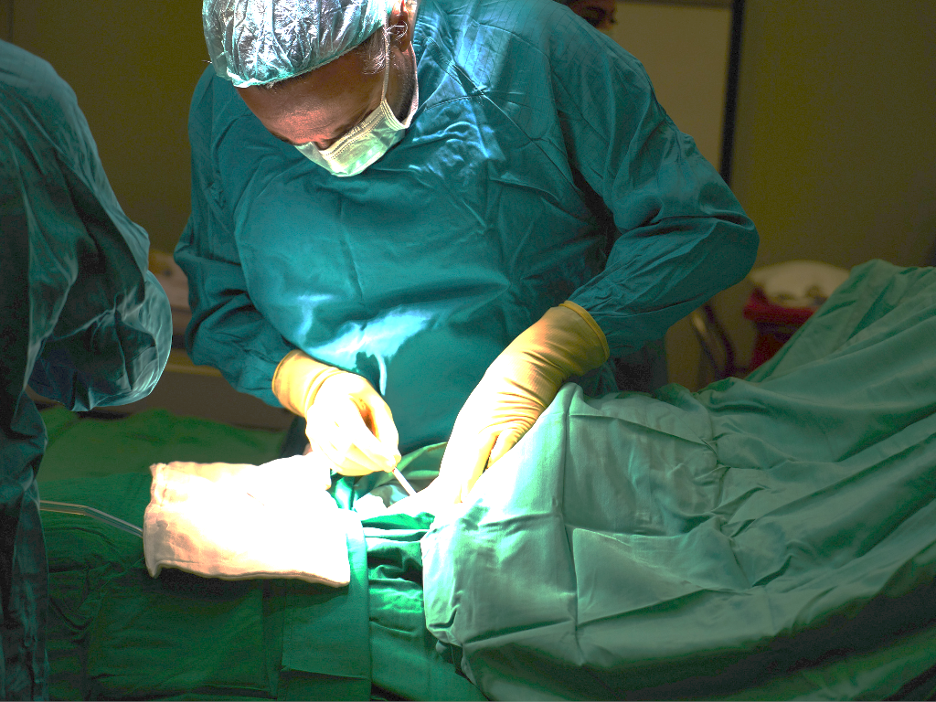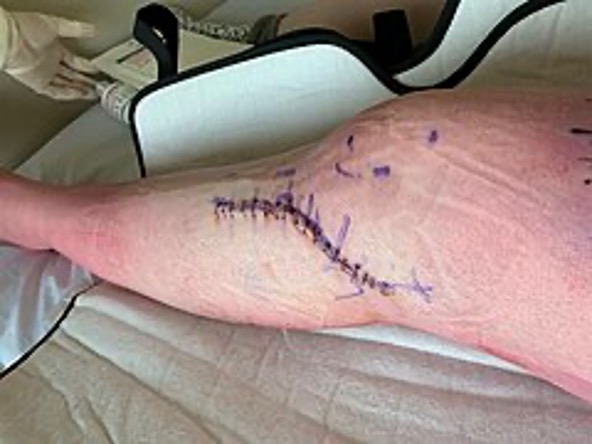Course
Patient Safety and Surgical Error Prevention
Course Highlights
- In this course we will learn about the importance of ensuring patient safety, and why it is important for all perioperative team members to actively work toward the prevention of surgical errors.
- You’ll also learn the basics of The Joint Commission’s Universal Protocol and its three main steps.
- You’ll leave this course with a broader understanding of how you can help your team prevent surgical errors and promote patient safety.
About
Contact Hours Awarded: 1.5
Course By:
Abbie Schmitt
MSN-Ed, RN
Begin Now
Read Course | Complete Survey | Claim Credit
➀ Read and Learn
The following course content
Patient safety is one of the most important aspects of any form of nursing. In the Operating Room (OR), however, the nurse needs to be even more cognizant of patient care and safety within the perioperative setting. Three major steps to ensure proper care and safety are a huge component to an injury-free outcome, including the time before induction, the time before the first incision, and the time before the patient leaves the surgical room. Prevention of any mishap is paramount and sometimes even triple checking your facts is warranted.
Introduction
The safety of surgical procedures has improved significantly over the last 200 years with innovations such as evidence-based practice guidelines, antibiotics, and technology. The average number of surgeries in a person’s lifetime is around seven, and there are roughly 313 million surgical procedures performed each year worldwide (1). Following this trend of increased procedures each year, precautions must be enforced to maintain patient safety during their hospital stay.
Justification of Subject Matter
As surgery continues to present unknown factors in certain patient groups, being familiar with the Joint Commission on Accreditation of Healthcare’s (JCAHO) Universal Protocol will ensure safe and effective communication within the operating room. Knowing these policies will facilitate a better understanding of what is required before the patient even enters the room. The three steps outlined in the protocol lead to better communication between all team members, which can enhance patient safety.

Self-Quiz
Ask Yourself...
- How can Operating Room (OR) personnel ensure safe and effective communication in both an elective case and an emergent one?
Epidemiology
The opportunity for near misses and other adverse events can be elevated as the perioperative department is high-stress and high-pressure. Communication and teamwork are key in every procedure with every team member.
The Joint Commission reported 1,441 sentinel events in 2022; the most prevalent sentinel event types include the following: Falls (42%), delayed treatment (6%), unintended retention of foreign objects (6%), wrong-site surgery (6%), and suicide (5%) (4).
The leading causative factors of reported sentinel events were failures in communications, teamwork, inconsistent documentation, and failure to follow policy (4). Of all the sentinel events, 20% were associated with patient death, 44% with severe temporary harm, and 13% with unexpected additional care/extended stay (3, 4).

Self-Quiz
Ask Yourself...
- Have you been involved in a wrong site, wrong patient, or wrong procedure event?
- What are possible steps to take to prevent wrong-site surgical procedures?
Overview of Universal Protocol
Universal Protocol was created in 2004 by JCAHO and entails the minimum responsibility of perioperative nurses to ensure patient safety and that the correct procedure is performed.
Implemented by surgical facilities, ambulatory care centers, and hospital groups, this protocol has significantly reduced the number of wrong sites, wrong sides, and wrong procedure cases. It assigns specific tasks and communication needed for three different stages of the patient’s perioperative tour.
The protocol itself follows three steps:
- Preoperative Verification
- Marking of the Site
- A Timeout before Incision
(2)
The three major perioperative steps include:
- Verification before the patient enters the OR suite
- Verification before the first incision is made
- Verification of procedure before the patient heads to Recovery
(2)

Case Study
Two men are playing at the local tennis club, showing off for others sitting near the court. After they make it to the showers, they both complain of pain in their shoulder, which they assume is due to the strenuous tennis maneuvers. After seeing an orthopedic surgeon, they are both told they need to have a shoulder arthroscopy to fix the issue.
Jack Johnson – Left-handed – Left shoulder arthroscopy
John Jackson – Right-handed – Right shoulder arthroscopy
On the day of surgery, the preop nurse places a star by their name to show there is a similarity between the two. The surgeon runs late in the clinic and tells the circulator to get the patient in the room and ready for him when he arrives. The circulator is still finishing up on the last patient and has just been relieved for lunch. She tells the lunch RN to be careful as the names of the next two patients are similar. The lunch RN goes to greet the patient and brings him back to the OR suite.
There is no pre-op verification as the lunch relief assumes the circulator has already spoken to the patient because the surgeon wanted the patient brought back quickly. She brings John Jackson, who is having his right shoulder done, back instead of Jack Johnson, who is having his left shoulder fixed. In their hurry to get the patient on the table, there is no verification upon entering the room, nor do they ask the patient for his name or birthday.
He does state he is happy he got to go first instead of second. After intubation, the surgeon arrives to start the case. He checks the X-rays before picking up the scalpel. Once he gets into the shoulder, he finds nothing wrong. After some double-checking, the OR RN discovers they have the wrong patient on the table and are operating on the wrong side.

Self-Quiz
Ask Yourself...
- Do you see any errors that were made in this case study?
- How would you address them and move forward?
- What tools could be applied to prevent this in the future?
Three Steps to Enhance Patient Safety
- Patient and procedure verification preoperatively
- Patient and procedure verification before the first incision
- Patient and procedure verification before patient leaves OR
These three steps, when done properly, have saved countless numbers of the wrong site, wrong side, and wrong procedures while increasing patient safety. Making a checklist and marking each item off will ensure you have performed all the tasks required. Teamwork and communication will always be key as no two patients are ever the same (1). Let’s look at each step individually:
Preoperative Patient and Procedure Verification
Before the patient is brought back to the OR, several items need to be assessed: patient identity and birthdate, procedure and procedure site, signed consent, allergies to food or medications, and marking of the correct site. The nurse should also ensure that the History and Physical (H&P) is completed and the patient has been asked about any beta blockers they may be taking.
The circulator should confirm that both the anesthesia and the surgeon have seen the patient to make sure any last-minute questions are answered concerning the surgery. Blood products should be ordered and ready to be released, as well as ensuring any special equipment or implants are ready and available. Thromboembolism prophylaxis should also be verified in preop. X-rays should be displayed on a monitor for the surgeon to check when he arrives (2).
After the patient has entered the OR suite, the circulator should introduce him to all the team members. Verification of patient name, birthdate, and procedure should follow and check to see if the site is marked in the proper location so team members can verify it along with the patient.
Reconfirm allergies and place anesthesia monitors on the patient: Blood pressure cuff, pulse oximeter, and EKG leads. Confirm with anesthesia if difficult airway equipment is needed, a glide scope, for example (2).
Having the patient join at this step also facilitates better communication between all parties. The patient can verify all information, and team members can ask questions to be sure they are all on the same page for the upcoming procedure.

Self-Quiz
Ask Yourself...
- Have you ever had a patient disagree with you about the procedure being done? How did you handle it?
- What specific patient identifiers are vital to check?
- Should you reconfirm the surgical procedure and site with the patient if possible?
- If so, why?
Mark the Procedure Site
Marking the site is imperative when there is more than one possible location for the procedure, and when performing the procedure in a different location could harm the patient.
Clinical Implication for Marking the Procedure Site:
- The site should be marked before the procedure is performed
- Involving the patient in the site-marking process if possible.
- The site should be marked by a licensed independent practitioner who is ultimately accountable for the procedure and will be present when the procedure is performed.
- The procedure mark should be unambiguous and consistently used throughout the organization.
- The mark is visible after skin preparation and draping.
- For patients who refuse site marking or when it is not anatomically possible or impractical to mark the site, use the organization’s written, alternative process to ensure that the correct site is operated on.
(2)

Patient and Procedure Verification Before First Incision
Before the first incision, a “Time-Out” should be performed. All team members should introduce themselves and explain what their function is. They should also stop what they are doing and pay close attention to the information that is being confirmed.
The surgeon typically leads this process and completes a Time-Out Checklist, which should be hanging in every room, starting with confirmation of the patient’s identity and the procedure site is marked in the correct location. Any allergies are noted, as well as if antibiotic prophylaxis was given 30 minutes before the procedure.
There is an assessment as the circulator confirms the prep solution has had time to dry and not pool under the patient. The surgeon will also state any time concerns or complex parts of the case. If blood is needed, the surgeon will state how many units to release and when. The surgeon will also ask if all equipment is available and if the sterility has been checked (2).

Self-Quiz
Ask Yourself...
- What would most likely occur if the antibiotic had not been given within 30 minutes?
- What events may occur if the patient needed Heparin, but didn’t receive it?
- What if one small piece of equipment in one of the instruments or implant pans is contaminated? How would you handle this situation?
- What are the “time-out” steps?
Patient and Procedure Verification Before the Patient Leaves Operating Room
The procedure is completed; now it is time for the final check. The circulating nurse, along with all team members, needs to do the ending Time-Out. The surgeon or nurse can lead this part, beginning with verification of the patient, birthdate, and procedure with the site. The surgeon should give his estimation of blood loss during the procedure.
Any lab work or specimens must be reconciled and correctly labeled. Instrument and sponge counts should be completed and verified. Any equipment issues should be confirmed and tagged to be fixed. Before the patient leaves the room, their chart and any belongings should be placed on the bed with them (5).

Self-Quiz
Ask Yourself...
- Have you ever had a surgeon verify the procedure, and it was different than what you thought? How did you handle it?
- Why is it important to properly count instruments and sponges?
- Can you discuss why notes on blood loss or unexpected surgical occurrences are meaningful to report?
Case Study (cont.)
Now that we know how the JCAHO Universal Protocol along with the main three steps are supposed to work, let’s revisit the previous case.
Remember the two guys from the tennis club:
Jack Johnson – Left-handed – Left shoulder arthroscopy
John Jackson – Right-handed – Right shoulder arthroscopy
The preop nurse did the correct thing by placing a star by their names because they were similar. Many things happened that led to confusing team members. The surgeon was running late, and the circulator was being given lunch relief. Sometimes, we need to slow down and say time out to get our bearings.
The circulator told the lunch RN about similar names; however, the lunch RN assumed the circulator had already spoken to the patient and just brought him back. She did not check his name, birth date, or procedure too carefully.
There should have been a stop when the patient arrived in the OR to let him verify his name, birthdate, and procedure; this was omitted. The patient, John Jackson, did state that he was glad he was getting to go first, though; that should have set off alarms. The surgeon arrives, checks the X-rays, and gets the procedure underway. After discovering nothing wrong with the left shoulder of this patient, the surgeon rechecks the X-rays. The circulator then double-checks her information to discover they have the wrong patient and wrong site.
In today’s world, this doesn’t happen as frequently as it once did. With the advent of the Universal Protocol and the three steps, verification of all patient information is available and checked at least three times before the scalpel ever touches them. Patient safety must always be paramount.

Conclusion
All of these steps lead to enhanced patient safety and a safer environment for the OR staff. There are no surprises when the team already knows what to expect with any given case. All team members should be knowledgeable about the JCAHO Universal Protocol and what it entails as well as its three steps. When all team members work together utilizing all these protocols, it leads to a positive outcome for both the patient and the staff, and it can greatly reduce the number of errors.
References + Disclaimer
- Albsoul, R., Alshyyab, M.A., Al Odat, B.A., Al Dwekat, N.B., Al-masri, B.E., Alkubaisi, F.A., Flefil, S.A., Al-Khawaldeh, M.H., Sa’ed, R.A., Abu Ajamieh, M.W. and Fitzgerald, G. (2023), “Surgical team perceptions of the surgical safety checklist in a tertiary hospital in Jordan: a descriptive qualitative study”, The TQM Journal, Vol. 35 No. 6, pp. 1394-1416. https://doi.org/10.1108/TQM-02-2022-0069
- Downey, PA., Yaremchuk, M. (2023). Universal Protocol. In: Yaremchuk, M., Serebrakian, A.T., Pickrell, B.B., Paniss, J., Bailin, M.T., Gangi, N. (eds) Expertise in the Operating Room. Springer, Cham. https://doi.org/10.1007/978-3-031-30835-2_3
- Jacobs, L.M. (2023). Study analyzes wrong-site surgery data in medical malpractice complaints. American College of Surgeons (ACS). Retrieved from https://www.facs.org/for-medical-professionals/news-publications/news-and-articles/bulletin/2023/june-2023-volume-108-issue-6/study-analyzes-wrong-site-surgery-data-in-medical-malpractice-complaints/
- The Joint Commission. (2023). The Joint Commission releases sentinel event data on serious adverse events at US healthcare organizations. Retrieved from: https://www.jointcommission.org/resources/news-and-multimedia/news/2023/04/the-joint-commission-releases-sentinel-event-data. Accessed July 11, 2024.
- Pevec, T., Albreht, T., & Turk, E. (2023). Safety culture in the operating room: translation, validation of the safety attitudes questionnaire – operating room version. BMC health services research, 23(1), 491. https://doi.org/10.1186/s12913-023-09539-9
- Ryan, D., Rocks, M., Noh, K., Hacquebord, H., & Hacquebord, J. (2024). Specific factors affecting operating room efficiency: an analysis of case time estimates. Journal of Hand Surgery, 49(5), 492.e1-492.e9. https://doi.org/10.1016/j.jhsa.2022.08.025
- WikiCommons. (2022). Image of Post Lateral Tibial Plateau Fracture Repair Surgical Incision Site. Creative Commons Attribution-Share Alike 4.0 International)
Disclaimer:
Use of Course Content. The courses provided by NCC are based on industry knowledge and input from professional nurses, experts, practitioners, and other individuals and institutions. The information presented in this course is intended solely for the use of healthcare professionals taking this course, for credit, from NCC. The information is designed to assist healthcare professionals, including nurses, in addressing issues associated with healthcare. The information provided in this course is general in nature and is not designed to address any specific situation. This publication in no way absolves facilities of their responsibility for the appropriate orientation of healthcare professionals. Hospitals or other organizations using this publication as a part of their own orientation processes should review the contents of this publication to ensure accuracy and compliance before using this publication. Knowledge, procedures or insight gained from the Student in the course of taking classes provided by NCC may be used at the Student’s discretion during their course of work or otherwise in a professional capacity. The Student understands and agrees that NCC shall not be held liable for any acts, errors, advice or omissions provided by the Student based on knowledge or advice acquired by NCC. The Student is solely responsible for his/her own actions, even if information and/or education was acquired from a NCC course pertaining to that action or actions. By clicking “complete” you are agreeing to these terms of use.
➁ Complete Survey
Give us your thoughts and feedback
➂ Click Complete
To receive your certificate
